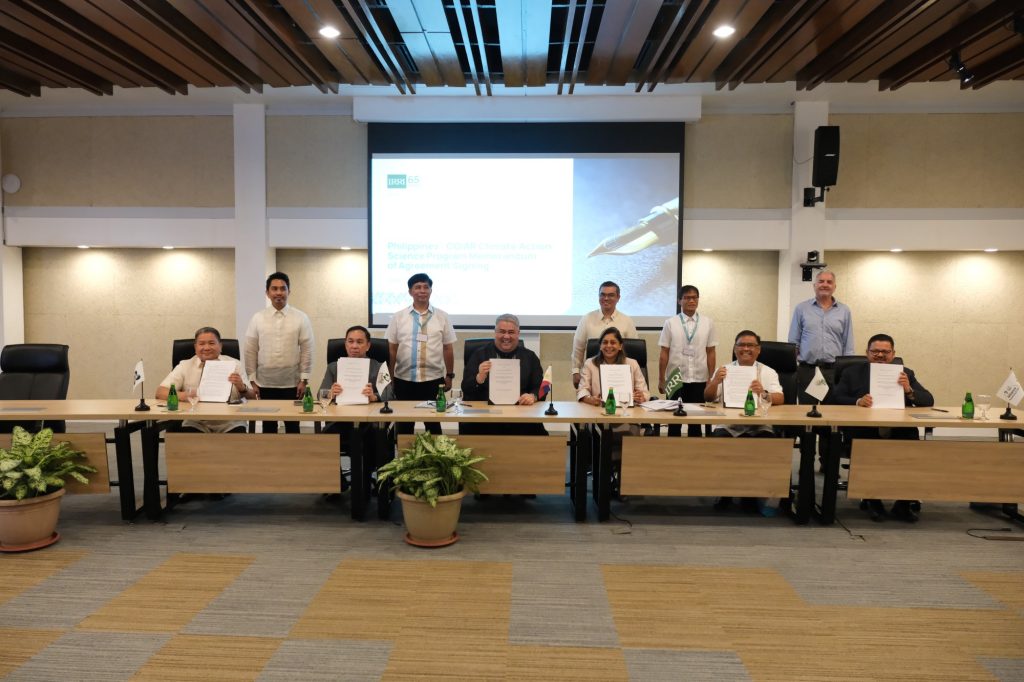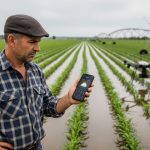Imagine standing in a field, the fruits of your labor swaying gently in the breeze, only to watch helplessly as unexpected weather patterns threaten to uproot your hard work. It’s a scenario that no farmer wants to face, yet it’s becoming increasingly common as climate change alters our world.
How can you safeguard your livelihood against these unpredictable threats? Enter crop insurance—a powerful tool designed to help you manage the risks posed by climate change. You’ll discover how crop insurance can serve as a crucial ally in your climate risk management strategy.
Whether you’re a seasoned farmer or just starting out, understanding this safety net could be the key to securing your agricultural future. Curious to learn more? Let’s explore how crop insurance can protect your hard work and provide peace of mind.

The Role Of Crop Insurance
Farmers face uncertain weather patterns due to climate change. Crop insurance plays a crucial role in risk management. It provides financial protection and stability for farmers. This safety net helps them recover from unpredictable climate impacts.
The Benefits Of Crop Insurance
Crop insurance offers peace of mind to farmers. It covers losses from natural disasters like droughts and floods. This reduces financial stress during tough times. Insurance can also support farmers in trying new practices. Innovation can improve crop resilience to climate change.
Risk Mitigation Through Crop Insurance
Insurance helps farmers plan ahead. It ensures they have resources after a bad season. This protection encourages long-term investments in sustainable farming. Farmers can focus on improving soil health and water management. These practices reduce vulnerability to climate risks.
Supporting Sustainable Agriculture
Crop insurance promotes sustainable farming methods. It allows farmers to adopt eco-friendly techniques without fear of loss. This support leads to healthier crops and better yields. Sustainable practices also contribute to environmental conservation. Crop insurance helps balance productivity and ecological health.
Encouraging Technological Advancements
Insurance supports the adoption of technology in farming. Farmers can invest in weather monitoring systems and efficient irrigation. These advancements help manage climate risks effectively. Technology improves decision-making and crop planning. Crop insurance backs these innovations, enhancing farm resilience.
Adapting To Climate Challenges
Climate change presents significant challenges for farmers. Unpredictable weather affects crop yields. Farmers need strategies to manage these risks. Crop insurance offers a reliable solution. It provides financial protection against climate impacts. Insuring crops helps farmers adapt to changing conditions. This support is crucial in uncertain times.
Understanding Climate Risks
Climate risks can devastate crops. Droughts, floods, and storms are increasing. These events threaten agricultural productivity. Farmers need to understand these risks. Recognizing patterns helps in planning better. Awareness leads to informed decisions. Crop insurance aids in managing these uncertainties.
Mitigating Financial Losses
Farmers face financial losses from crop failures. Insurance helps mitigate these losses. It provides compensation for damaged crops. This financial safety net is essential. It ensures farmers remain stable economically. They can continue farming without major disruptions.
Encouraging Sustainable Practices
Insurance encourages sustainable farming. Farmers adopt practices that reduce risks. Techniques like crop rotation and soil conservation are vital. These practices improve resilience against climate impacts. Sustainable methods align with insurance requirements. They promote long-term agricultural success.
Building Resilience In Agriculture
Resilience is key for adapting to climate change. Crop insurance supports this resilience. It provides a buffer during tough times. Farmers can invest in new technologies. They can explore innovative farming methods. Insurance empowers them to adapt and thrive.
Future Of Climate-resilient Agriculture
The future of climate-resilient agriculture is crucial for farmers. Unpredictable weather patterns challenge traditional farming methods. Climate change increases risks. Farmers face floods, droughts, and storms. Crop insurance emerges as a vital tool. It helps protect farmers’ investments. Crop insurance is more than financial security. It supports sustainable farming practices. This ensures a stable food supply for all.
Understanding Climate-resilient Agriculture
Climate-resilient agriculture adapts to changing climates. It uses techniques that withstand extreme weather. These practices include water management. Soil conservation is also important. Crop diversification helps as well. This approach reduces vulnerability. Farmers can maintain production levels. It ensures food security.
The Role Of Technology In Crop Insurance
Technology plays a key role in crop insurance. Satellite imagery provides real-time data. This helps assess damage quickly. Drones monitor fields effectively. They offer precise information. Technology ensures timely payments to farmers. It reduces paperwork. Digital platforms simplify the insurance process. Farmers access services faster.
Benefits Of Integrating Crop Insurance
Crop insurance offers many benefits. It provides financial stability for farmers. Insurance compensates for lost crops. This helps farmers recover. They can invest in new technologies. It promotes sustainable farming practices. Crop insurance supports climate-smart decisions. It encourages innovation in agriculture.
Challenges And Opportunities
There are challenges in adopting crop insurance. Awareness levels are low. Some farmers lack access to information. Insurance premiums can be costly. Yet, there are opportunities. Government support can ease costs. Training programs can educate farmers. Partnerships with private sectors are beneficial. These can expand insurance coverage.


Conclusion
Crop insurance plays a vital role in climate risk management. It offers farmers protection against unpredictable weather events. This financial safety net helps maintain farm stability. Farmers can recover losses and continue production. It encourages sustainable farming practices too. Crop insurance supports long-term agricultural resilience.
Choosing the right policy is crucial. Farmers should assess their specific needs and risks. With proper coverage, they can focus on growth and sustainability. In a changing climate, crop insurance proves essential. It secures livelihoods and ensures food production remains steady.
A wise investment for every farmer.



